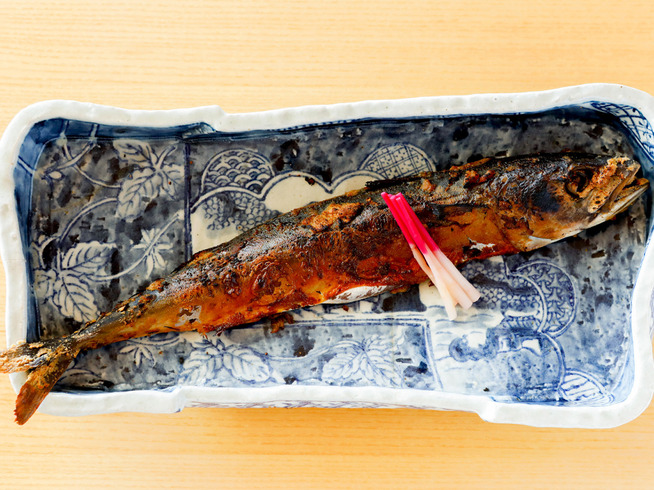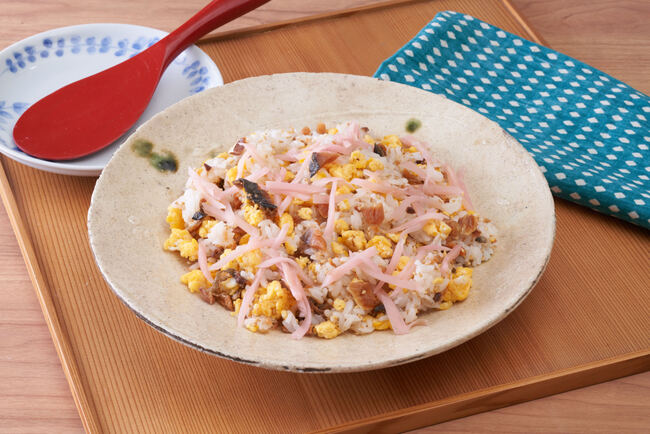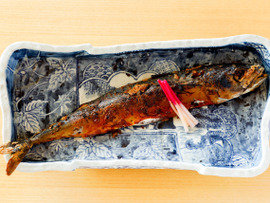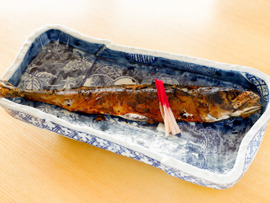
Heshiko

Fermented foods
FukuiHeshiko
Classification (Large)
Seafood products
Classification (Small)
Fishery fermented food
Main ingredients used
Mackerel, sardines, squid, puffer fish, salt, rice bran
When using downloaded images, please read the "Terms of Use" and clearly state that the source of the image is "Traditional Foods in Japan" by the Ministry of Agriculture, Forestry and Fisheries.
If the photo credits is stated, please include it as well.
Example of description
of the photo credits
Example of description when the photo credits is not stated
Source: "Traditional Foods in Japan" Ministry of Agriculture, Forestry and Fisheries
Example of description when the photo credits is stated
Source: "Traditional Foods in Japan" Ministry of Agriculture, Forestry and Fisheries
Photo credits:xxx
Region of inheritance
All regions of Fukui Prefecture
Product overview (special characteristics and types)
Heshiko, a rice-bran pickled seafood product, is made by pickling fish that has had its innards removed. The defining characteristic of Heshiko is its manufacturing process, as it is pickled first in salt and then in rice bran. Heshiko is manufactured in the spring, when mackerel is in season, or during the fall and winter seasons when bran can be easily obtained from the year’s first crop of rice. The fish is then pickled with salt and bran, and is left to preserve for at least a few months to a year.
Besides mackerel, other fish that is used for Heshiko include sardines, herring, pufferfish, and more.
Mackerel Heshiko is well-known, and can be found in numerous places in the southern Reinan region. On the other hand, “Konkazuke,” a Sardine Heshiko, is more popular in the northern Reihoku region. This is thought to be a result of the influence of the food culture of neighboring Ishikawa Prefecture.
History and culture
Heshiko reportedly originated in the Wakasa region of Fukui Prefecture, manufactured as a protein source for when the winters were too harsh for fishing. It is said to have already existed by the mid-Edo period.
With Heshiko leading the way in demonstrating how processed foods could now be kept longer, seafood that was caught in the Wakasa region was brought to Kyoto, where the imperial court was at the time, via the Wakasa Highway. Due to salted mackerel taking up a large portion of the seafood being transported to Kyoto, this highway has been referred to as the “Mackerel Highway” in recent years.
There are a few theories about the origin of the name. One of the origins of the name ‘Heshiko’ might lie in how fishermen used to stuff the fish into pickle barrels to preserve them. The Japanese word for ‘stuff’ is ‘heshikomu’, and ‘things that get stuffed’ are ‘heshikomareta-mono.’ ‘Heshiko’ comes from a contracted form of ‘heshikomareta-mono.’ Another theory for the origin of the name comes from the word ‘hishio,’ the liquid that fish secrete when salted. Dialectal influences might have evolved ‘hishio’ into ‘heshiko.’
Production method
After removing its innards, the fish is washed and salted. After that, it is left to pickle in rice bran for a period of several months to a year. It is eaten with sugar, soy sauce, shichimi, and other seasonings.
Conservation and succession efforts
In Mihama Town, Fukui Prefecture, the Mihama Heshiko Union has been formed in hopes of refining the product quality and branding of Heshiko. In 2020, the name “Heshiko of Mihama” was registered at the Japan Patent Office under the Regional Collective Trademark System. Elementary schools have extracurricular classes which educate local children on topics like how mackerel is made into Heshiko and how to make dishes with Heshiko as an ingredient.
In Obama City, Fukui Prefecture, owners of businesses dealing with the production of Mackerel Heshiko and the local traditional dish eaten at the end-of-year, “Heshiko Narezushi,” have established manufacturing standards and teamed up with the manufacturers themselves, working towards further raising product quality and expanding the market.
The Agency for Cultural Affairs has also recognized Heshiko as part of its ‘Dentou no Hyakunen Food’ list.
Main consumption method
It is eaten as a pairing with alcoholic beverages, the rice bran gently brushed off before it is scorched with a flame. It is also eaten as ochazuke, with tea and rice. Other ways to eat it include chirashi-zushi, mixed rice, and as an ingredient in spaghetti.
At-home recipes:Heshiko Chirashi-zushi(Serves 4)

Ingredients
Rice
2 cups
Water
2¼ cups
Mackerel Heshiko
half a fish
Vinegar blend (Vinegar: 3 tbsp, Sugar: 2 tbsp, Salt: ½ tsp)
Scrambled eggs (Eggs: 2, Sugar: 2 tsp, Salt: ¼ tsp, Oil: 1 tbsp)
White sesame
Add to taste
Sweet and sour pickled ginger
Add to taste
How to make
Cook rice. Stir vinegar blend into rice.
Remove the remnants of bran from Heshiko. Grill Heshiko whole. When sufficiently brown, rinse under running water. Chop finely.
Mix scrambled eggs in with chopped Heshiko.
Mix eggs and Heshiko into vinegar rice. Mix in white sesame. Sprinkle julienned pickled ginger all over the top of the rice.
Recipe Credit: A collection of local production for local consumption recipes by Takashi's food supporters (Fukui Agriculture and Forestry General Office)


